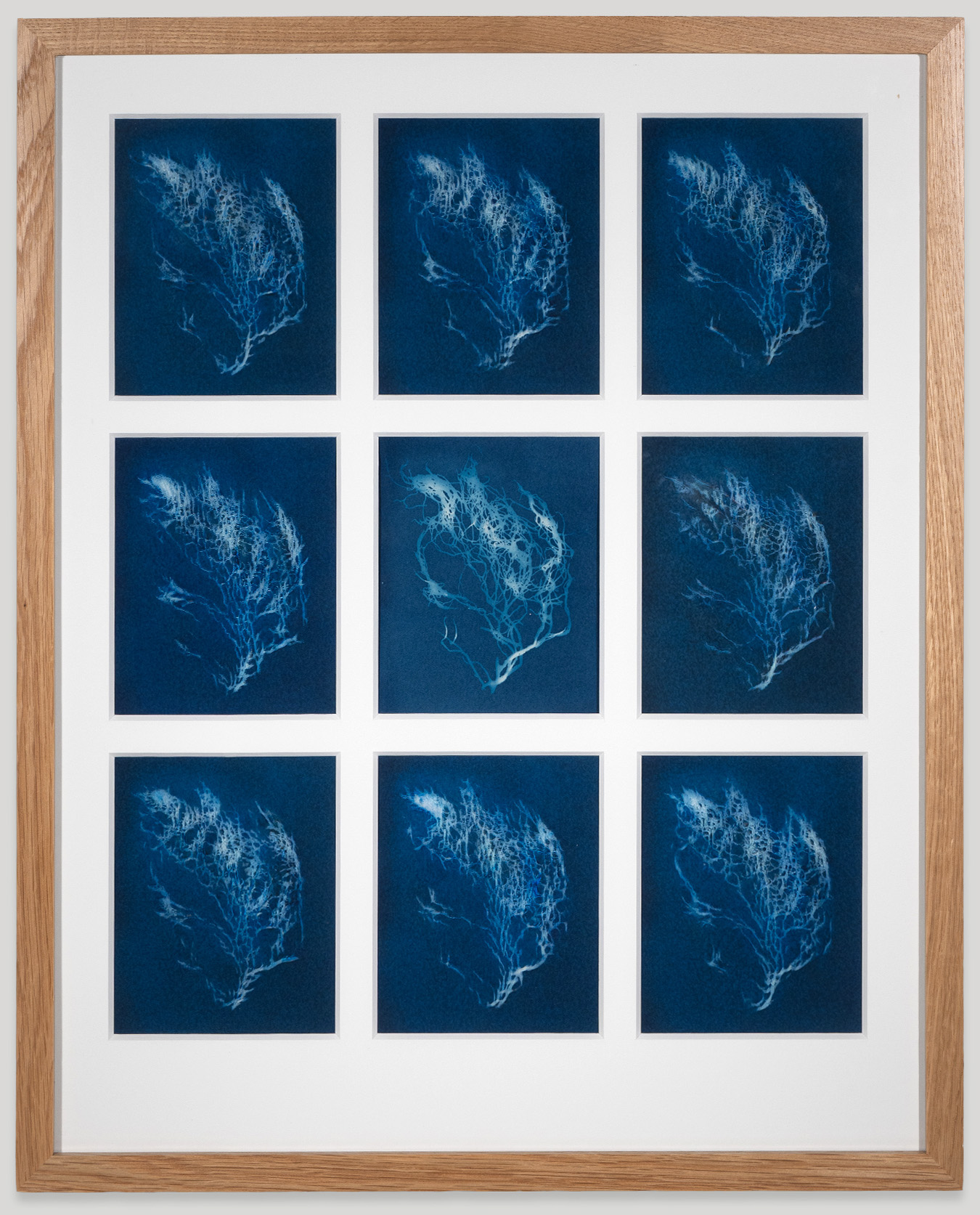On the Borders of Photographic Knowledge explores the colonial history of natural taxonomies. A dialectic of neural networks mine the volumes of Anna Atkins’ Photographs of British Algae to dream a botanical archive in the language of cyanotypes, latent with species never collected.
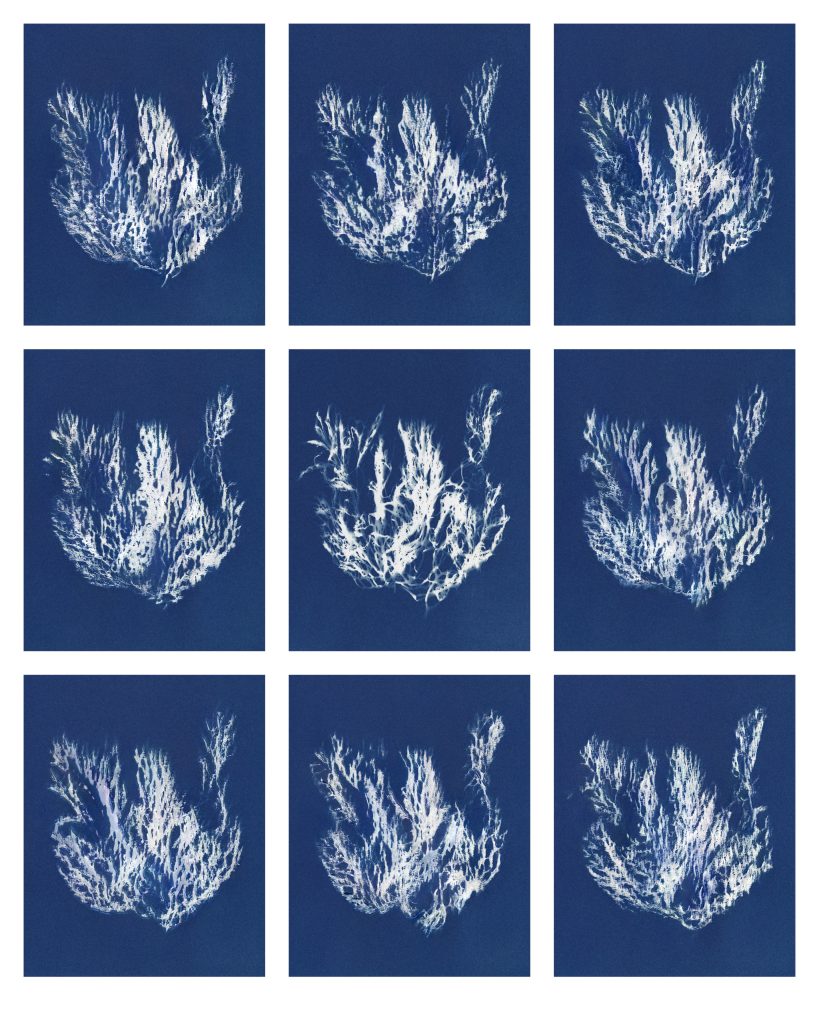
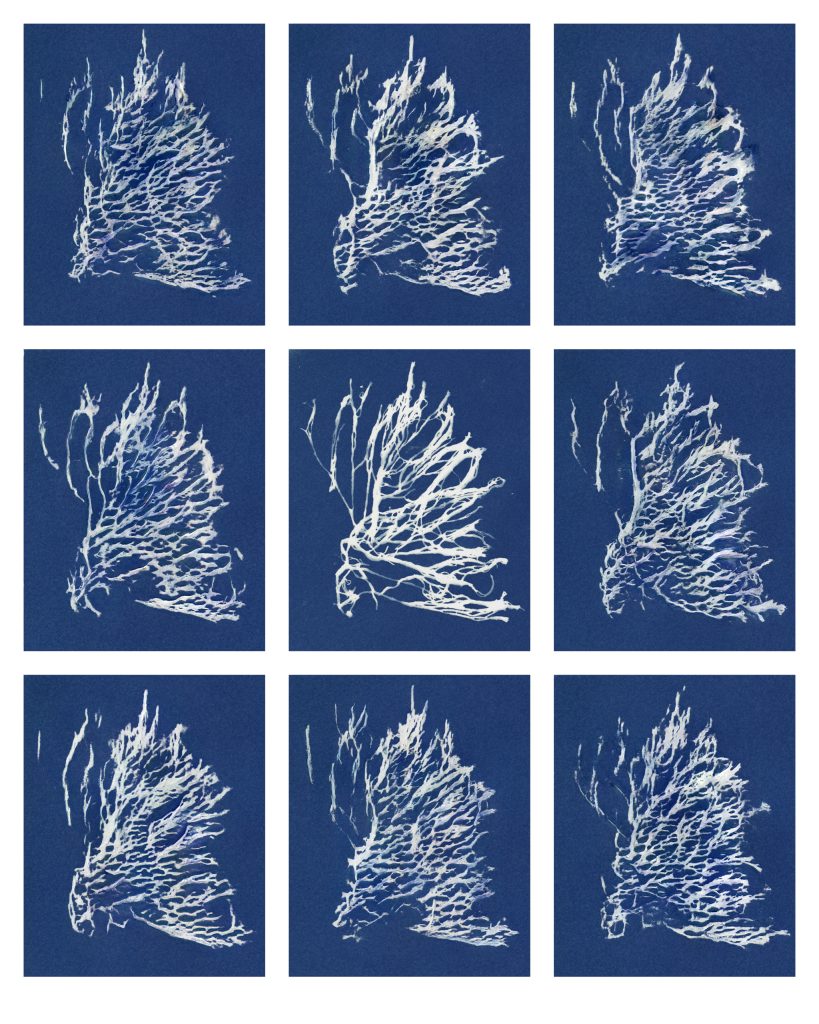
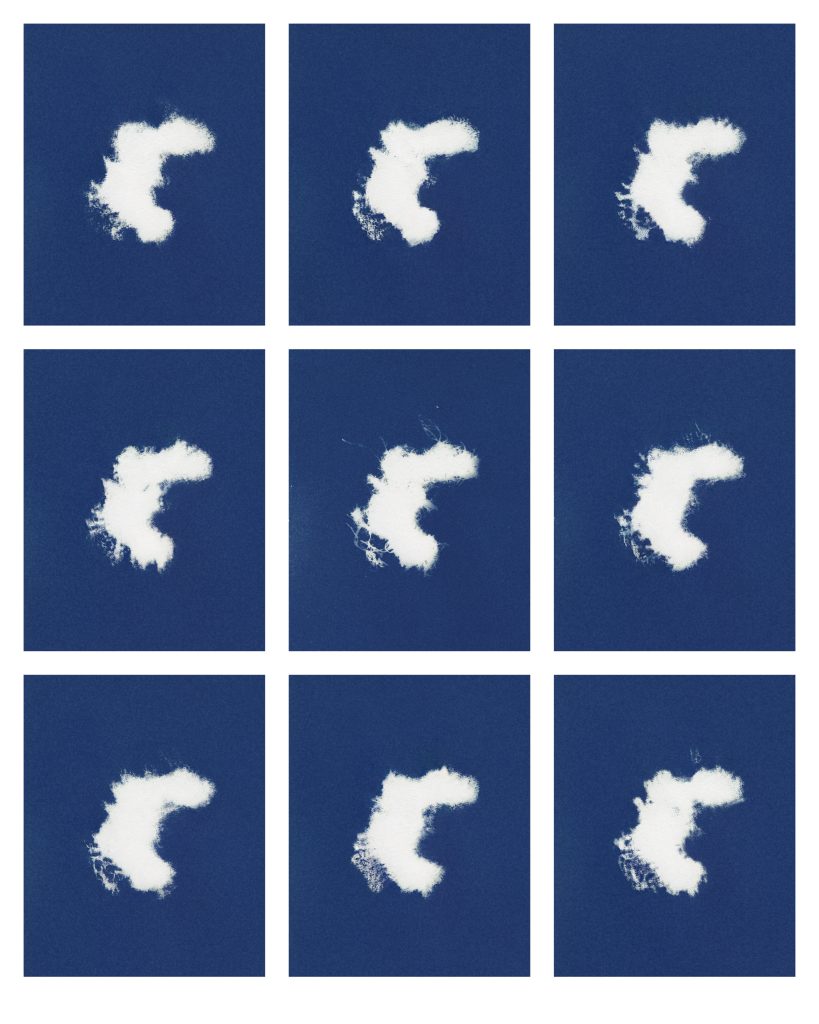
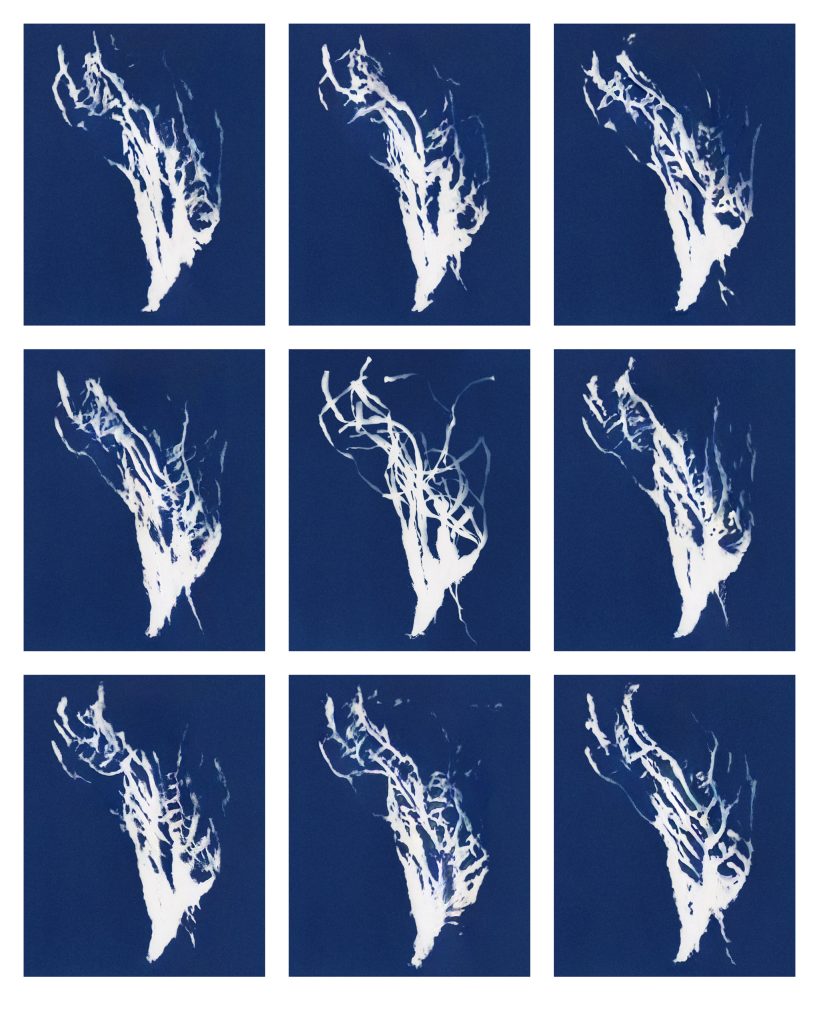
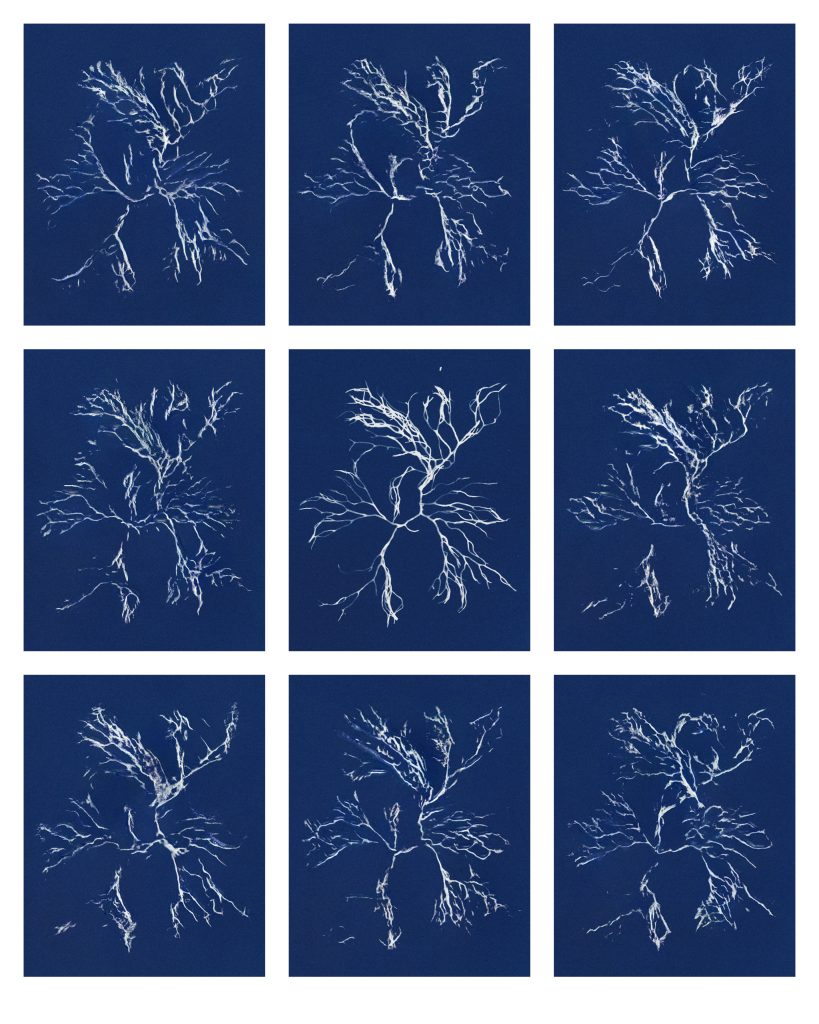
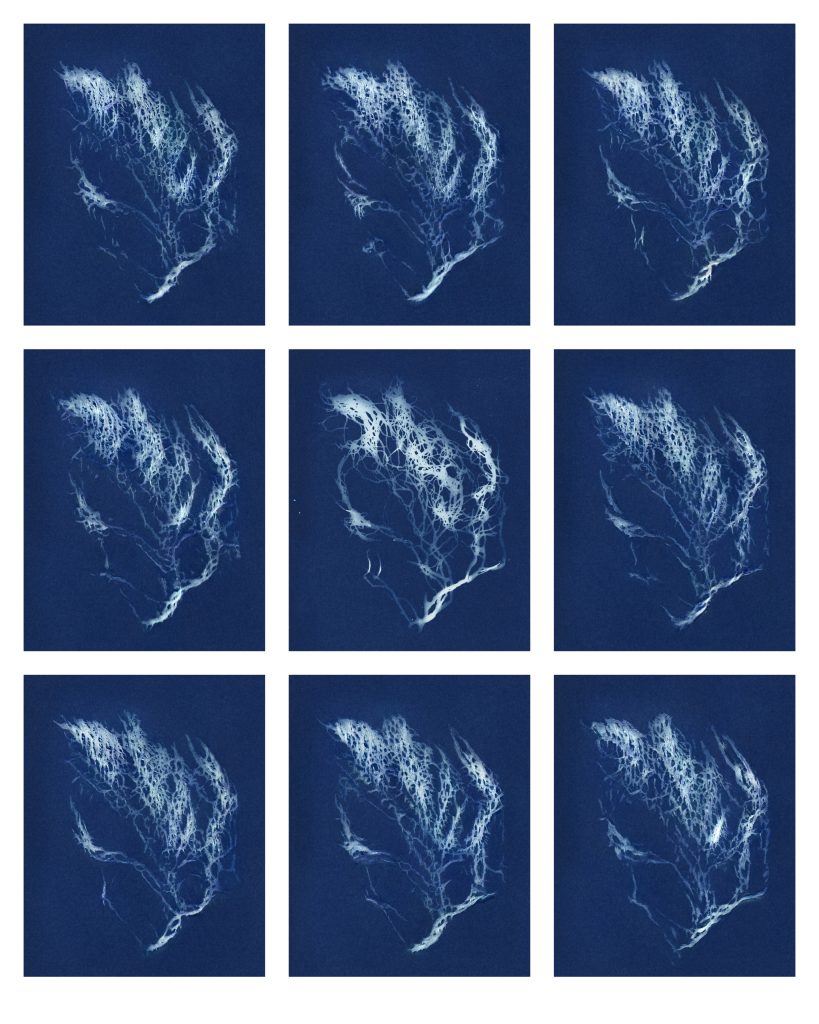
I gathered algae and made cyanotype prints in Aegean waters between Turkey and Greece, a region rich with colonial currents—from early empires through WWI to today’s migration crises. I projected these prints into a machine learning model I trained on Photographs of British Algae, using an original copy inscribed to Sir John Herschel, the inventor of cyanotypes.
In the print version, the center of the work is an original cyanotype imprint of algae. Surrounding the print, there are eight images created by a neural network in an attempt to find the contemporary specimen in the archives. In the video, a sisyphean algorithm tests the boundaries of machined imagination, gesturing towards the infinite regressions of scientific method.
Does a specimen exist a priori of its taxonomy? Atkins used the flattening language of camera-less photography to identify and (re)produce specimens in England, sometimes thousands of miles from their extraction, aided by her husband’s family, merchants in the East India Trading Company with plantations in Jamaica and Bermuda. The extractive logic of colonialism and capitalism is preserved in our natural archives. The algorithm renders the prescriptive nature of taxonomies that delimit our capacity to observe and to know.
My work is an attempt to reveal the prescriptive nature of scientific knowledge that shapes our capacity to observe and understand. Using tools that mediate our daily interactions to uncover spaces where information is transformed, I explore the tension between the interdependent nature of meaning-making and our desire for singular truth.
